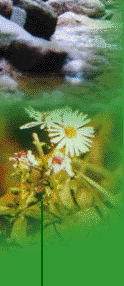|
Belovezhskaya Pushcha
One Day in Pushcha
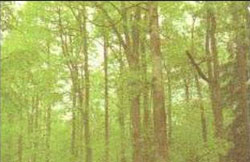 Recently I made a trip of a lovely
wildwood,
Belovezhskaya Pushcha,
that is 70 km away
from Brest, an hour's drive by a couch. That is the biggest primeval
forest in Europe, home to many rare animals. The forest was once the hunting grounds of kings
and tsars. In 1992 it became the first National Park and World
Heritage Site in Belarus. The unique forest is shared by Belarus
and Poland. The National Park in Poland has the similar name Puszcza
Bialowieska.
Recently I made a trip of a lovely
wildwood,
Belovezhskaya Pushcha,
that is 70 km away
from Brest, an hour's drive by a couch. That is the biggest primeval
forest in Europe, home to many rare animals. The forest was once the hunting grounds of kings
and tsars. In 1992 it became the first National Park and World
Heritage Site in Belarus. The unique forest is shared by Belarus
and Poland. The National Park in Poland has the similar name Puszcza
Bialowieska.
The frontier dividing Poland and Belarus runs across
the forest and as a rule is closed for tourists for the time being. I visited only the Belarusian (pertaining to independent
Belarus) National Park. The word Pushcha
sounds odd at first glance. If translated it is quite simple. The Slavonic
word Pushcha (puszcza in Polish spelling) means an age-old vast
woodland in Russian, Byelorussian and Polish. If you pronounce it slowly
you will feel the mystery of the dark woods and stormy winds sweeping over them.
Pronounce slowly the English word "wooooods" and you will feel the same.
Once Belarus was totally covered by forests and there were a lot of
pushchas. The people could travel here only along rivers till the
14th century. As a matter of fact, roads and bridges were not existing in
those days.
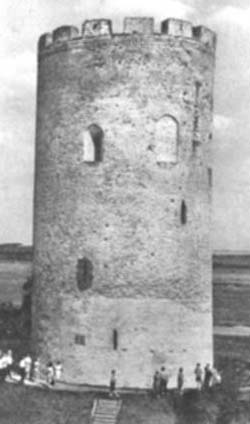 The adjective Belovezhskaya sounds bright and brings
light. It derives from the 2 Slavonic words byelaya
viezha that sound similar in 3 Slavonic languages -
Russian, Byelorussian and Polish and they mean the same -
White Tower. Being combined the two words give the name of the
famous forest belo-vezh-skaya.
The adjective Belovezhskaya sounds bright and brings
light. It derives from the 2 Slavonic words byelaya
viezha that sound similar in 3 Slavonic languages -
Russian, Byelorussian and Polish and they mean the same -
White Tower. Being combined the two words give the name of the
famous forest belo-vezh-skaya.
Presumably it was named after a tall
watchtower that still dominates Kamenets, the small town
on the edge of the National Park. Once Pushcha
was much bigger and the town was surrounded by it. The tower can be seen from
the distance when approaching the town. Actually it is a
redbrick round structure dating back to the 13 century AD
that houses today an interesting museum.
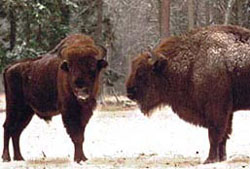 The Belarusian National Park covers the area of 215,871
acres (87.360 ha). The Polish National Park covers 13,136 acres (5.316 ha).
The Belarusian National Park covers the area of 215,871
acres (87.360 ha). The Polish National Park covers 13,136 acres (5.316 ha).
The whole forest has a wide range of flora and fauna (including elk, deer, and wild
boar) from both western and eastern Europe. It is the
sanctuary of the virtually extinct European bison, or wisent,
the largest animal in Europe.
The European bison is taller but lighter than the American
bison. I could see them only at a distance from behind bars.
Several are kept in a spacious enclosure surrounded by massive
bars. Like cows they feed on grass or hay. Though bison is not
a predator it is better to keep away from him.
Once upon a
time in the ages of mammoth the bison inhabited all the woods ranging
from Europe to Asia. In the early 20th century it was extinct in
the Pushcha, later it was restored by cross breeding. Now the
sock of bison reached 300.
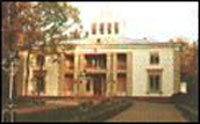 In a clearing in the woods near the small village of Viskuli a governmental
residence was built in the 50s to accommodate the leaders of
the former USSR when they used to come here to hunt.
On the 8th of December 1991 the historic instrument about the disintegration of the USSR
was signed in this building. Besides the Comonwealth of Independant States was
declared here too. Therefore the name Viskuli became known
worldwide, it annoys those who who are not eager to
recognise the disintegration of the USSR.
The building is a governmental residence and is closed for tourists.
In a clearing in the woods near the small village of Viskuli a governmental
residence was built in the 50s to accommodate the leaders of
the former USSR when they used to come here to hunt.
On the 8th of December 1991 the historic instrument about the disintegration of the USSR
was signed in this building. Besides the Comonwealth of Independant States was
declared here too. Therefore the name Viskuli became known
worldwide, it annoys those who who are not eager to
recognise the disintegration of the USSR.
The building is a governmental residence and is closed for tourists.
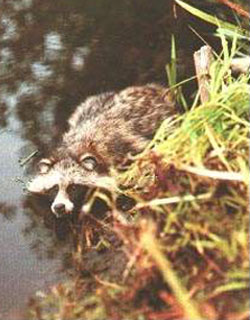 Certainly the
most interesting in the Pushcha is wild life, not the
notorious past and I rushed further on to enjoy the beauties
of the wildwood and breathe in the bracing smell of the
pines and herbs. The pushcha sustains typical European forest
fauna communities with 55 mammalian, 212 avifaunal, 11
amphibians and seven reptile species. Over 8000 insect species
have been recorded in the adjacent Polish park. Rodents prevail here among mammals numbering
over 20 species. The most remarkable I think is raccoon. He is
a new comer as it was brought here from Eastern Siberia and
introduced by scientists in post war period. He
lives by swamps and is getting on quite well here. Somewhere
in the thicket a wolf , fox, lynx, pine marten can hide. A
wild boar, red deer, roe and elk are not afraid of man but
they prefer also to be further away from people, to be on the
safe side.
Certainly the
most interesting in the Pushcha is wild life, not the
notorious past and I rushed further on to enjoy the beauties
of the wildwood and breathe in the bracing smell of the
pines and herbs. The pushcha sustains typical European forest
fauna communities with 55 mammalian, 212 avifaunal, 11
amphibians and seven reptile species. Over 8000 insect species
have been recorded in the adjacent Polish park. Rodents prevail here among mammals numbering
over 20 species. The most remarkable I think is raccoon. He is
a new comer as it was brought here from Eastern Siberia and
introduced by scientists in post war period. He
lives by swamps and is getting on quite well here. Somewhere
in the thicket a wolf , fox, lynx, pine marten can hide. A
wild boar, red deer, roe and elk are not afraid of man but
they prefer also to be further away from people, to be on the
safe side.
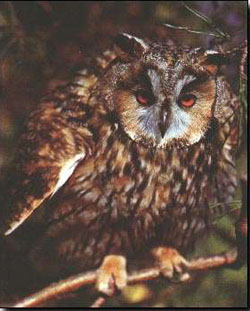 An unflappable-looking tawny owl is peering at me trying to see by the
daylight who is over there and what he is going
to do. She has seen a lot for her long, long life. She saw
Lithuanian dukes, Polish kings, Russian tsars and Soviet leaders
who were hunting in the Pushcha. Now she is
looking at you.
An unflappable-looking tawny owl is peering at me trying to see by the
daylight who is over there and what he is going
to do. She has seen a lot for her long, long life. She saw
Lithuanian dukes, Polish kings, Russian tsars and Soviet leaders
who were hunting in the Pushcha. Now she is
looking at you.
|

